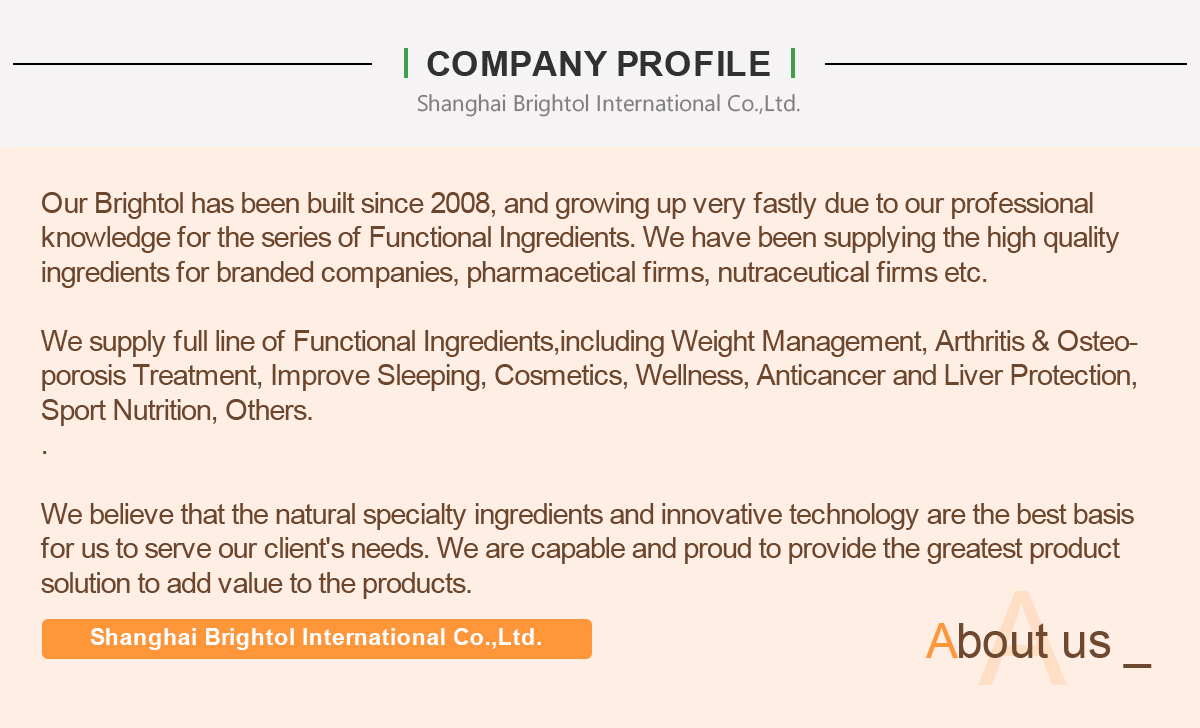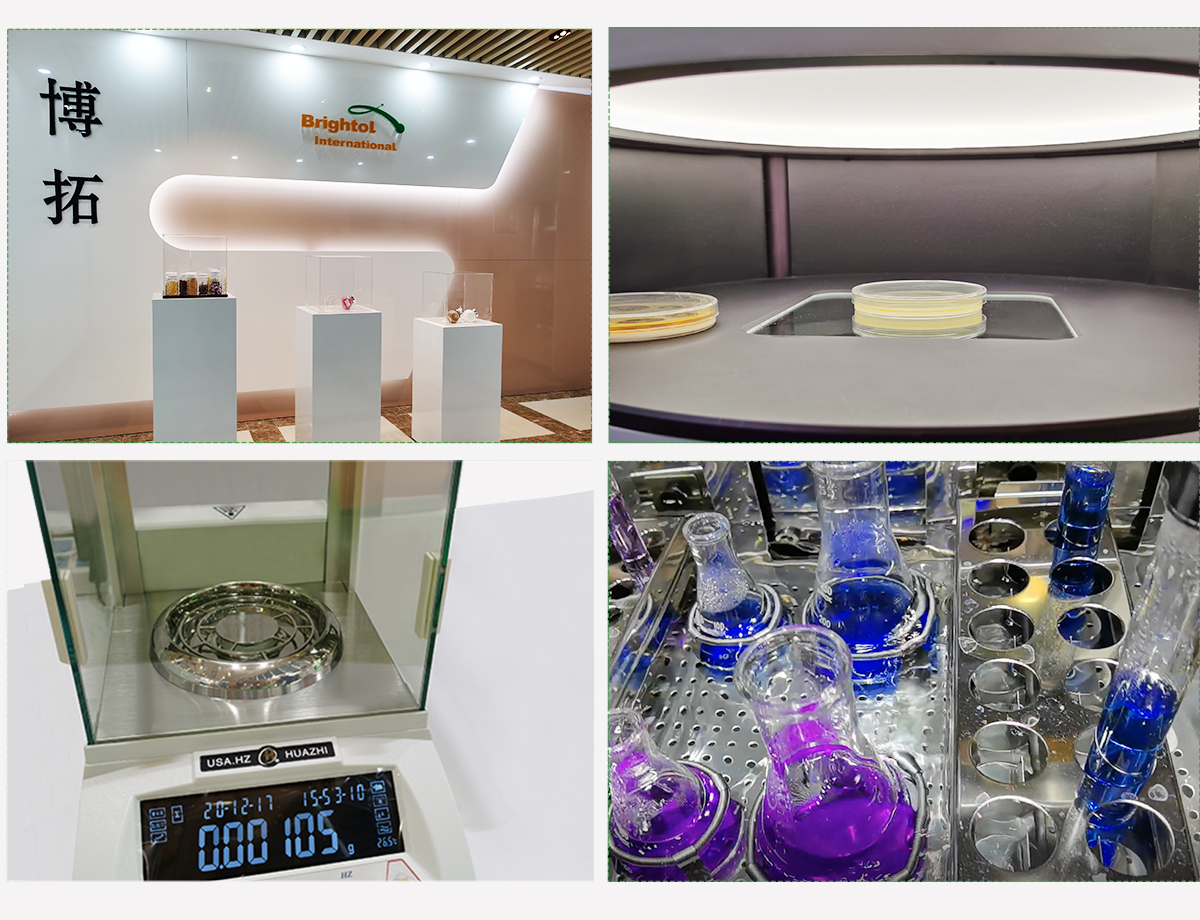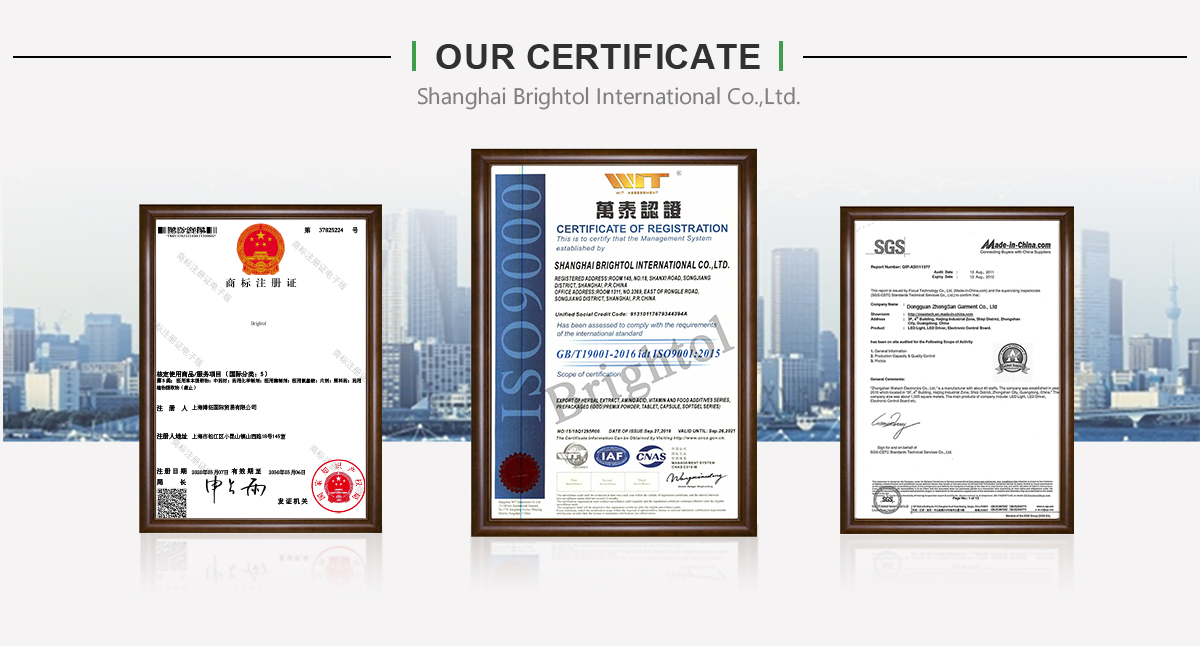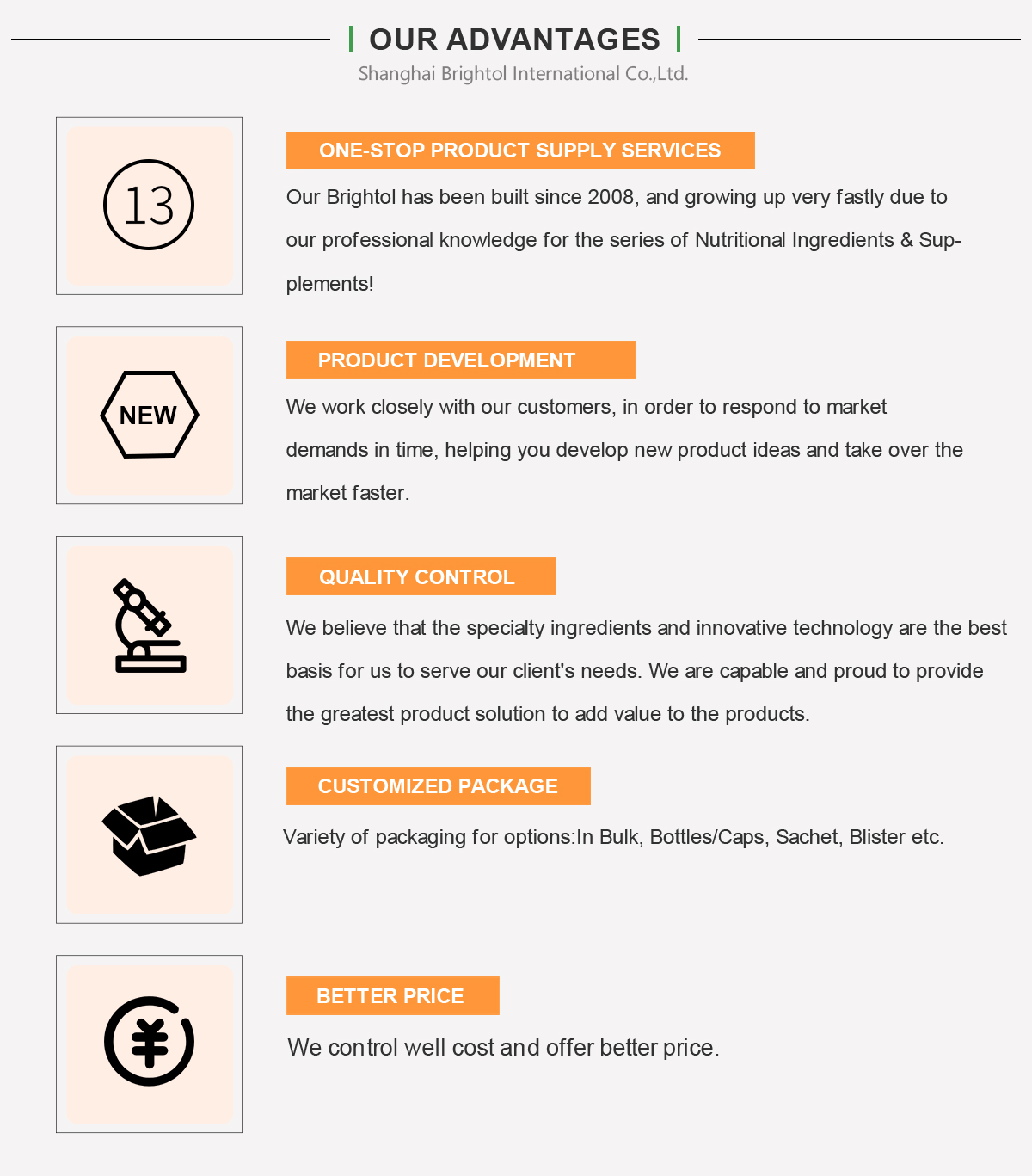

Product Name: Dihydroxyacetone
Synonyms: 1,3-Dihydroxy-2-propanone; Dihydroxyacetone; Glycerone
Molecular Formula: C3H6O3
Molecular Weight: 90.08
CAS No.: 96-26-4
EINECS: 202-494-5
Description:
Dihydroxyacetone, also known as DHA or glycerone, is a naturally occurring 3-carbon sugar. Cosmetically, DHA’s major commercial use is its implementation in tanning formulations. The effect of DHA tanning is caused by its reaction with skin-surface proteins found in the skin’s upper layers or epidermis. As the active tanning ingredient, DHA regulates the intensity of the skin-staining. Lower concentrations of DHA produce lighter skin staining which may not be suitable for darker complexions, while higher concentrations produce a darker skin-staining that can be effective for all skin types. DHA products include self-tanning creams and lotions, which are known to incorporate limited or no SPF protection.
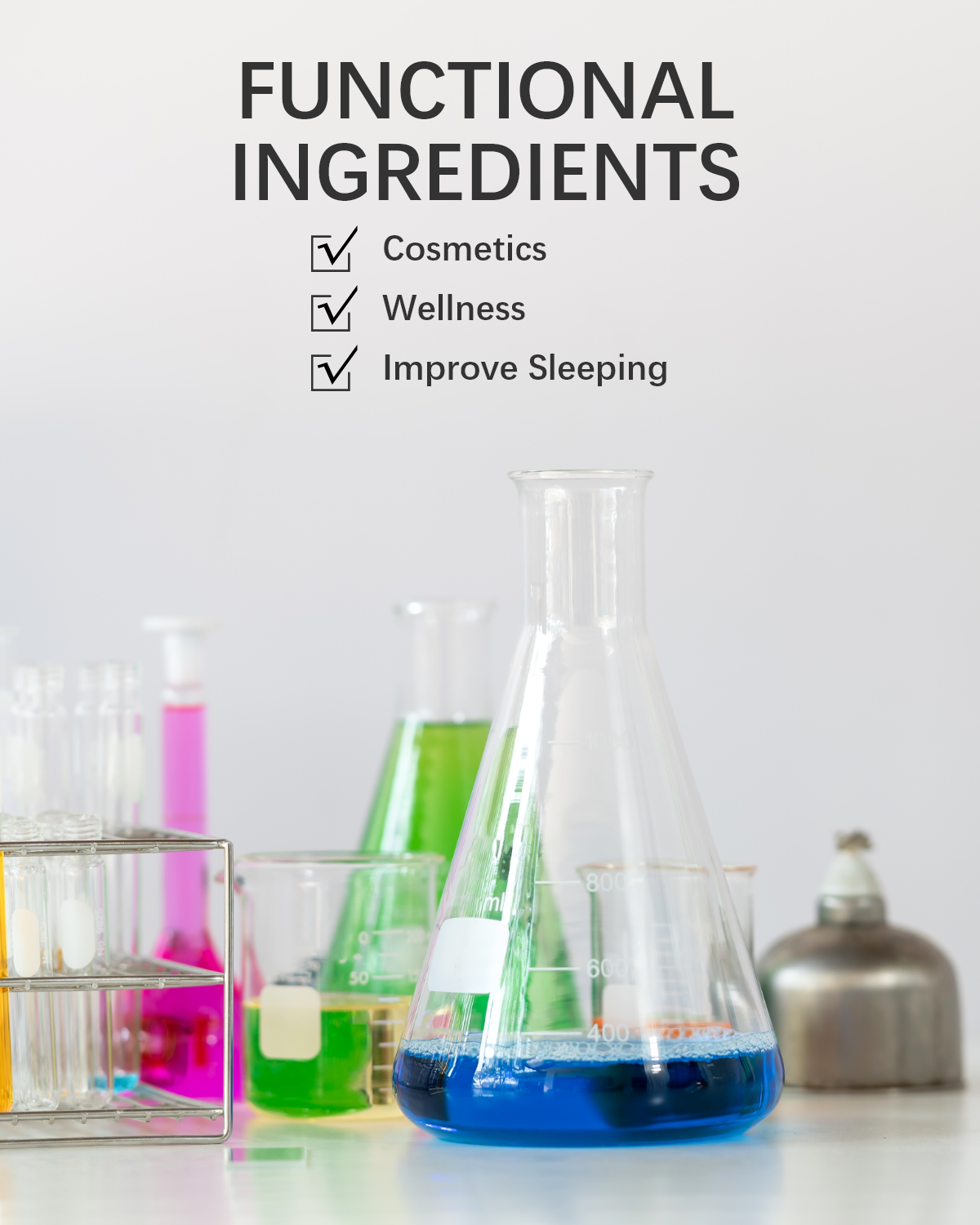

Product Name: Dihydroxyacetone
Synonyms: 1,3-Dihydroxy-2-propanone; Dihydroxyacetone; Glycerone
Molecular Formula: C3H6O3
Molecular Weight: 90.08
CAS No.: 96-26-4
EINECS: 202-494-5
Description:
Dihydroxyacetone, also known as DHA or glycerone, is a naturally occurring 3-carbon sugar. Cosmetically, DHA’s major commercial use is its implementation in tanning formulations. The effect of DHA tanning is caused by its reaction with skin-surface proteins found in the skin’s upper layers or epidermis. As the active tanning ingredient, DHA regulates the intensity of the skin-staining. Lower concentrations of DHA produce lighter skin staining which may not be suitable for darker complexions, while higher concentrations produce a darker skin-staining that can be effective for all skin types. DHA products include self-tanning creams and lotions, which are known to incorporate limited or no SPF protection.
Application:
1.Dihydroxyacetone is a natural ketose, which is biodegradable, edible and non-toxic to human body and environment. It is a multifunctional additive and can be used in cosmetics, medicine and food industries.
2. Dihydroxyacetone is mainly used as the formulation raw material of cosmetics, especially as a sunscreen. It can prevent the excessive evaporation of skin moisture and play the role of moisturizing, sunscreen and anti ultraviolet radiation.
3. supplementation of two hydroxyacetone, especially with pyruvate, can increase the body's metabolic rate and fatty acid oxidation, potentially effectively burn fat, reduce body fat and delay weight gain (reduce weight), reduce the incidence rate of related diseases, and improve insulin sensitivity and reduce plasma cholesterol levels caused by high cholesterol diet. Long term supplementation can increase the utilization rate of blood glucose and save muscle glycogen, and can improve the performance of aerobic endurance for athletes.
4. Dihydroxyacetone can also be directly used as an antiviral reagent. For example, in chicken embryo culture, DHA can greatly inhibit the infection of fowl plague virus and kill 51% ~ 100% of fowl plague virus. In the leather industry, DHA can be used as a protective agent for leather products. In addition, the preservative with DHA as the main component can be used for the preservation of fruits and vegetables, aquatic products and meat products.



